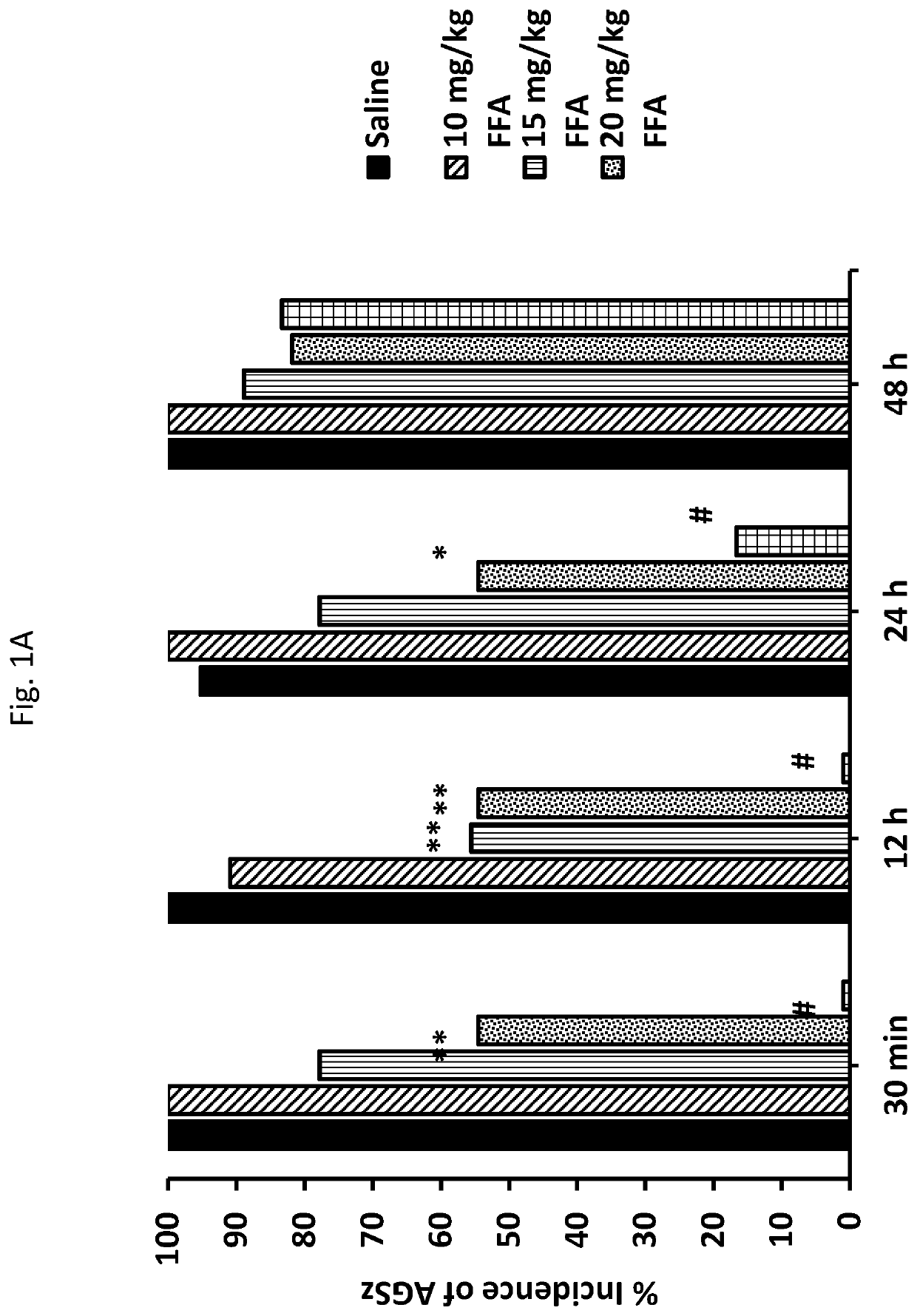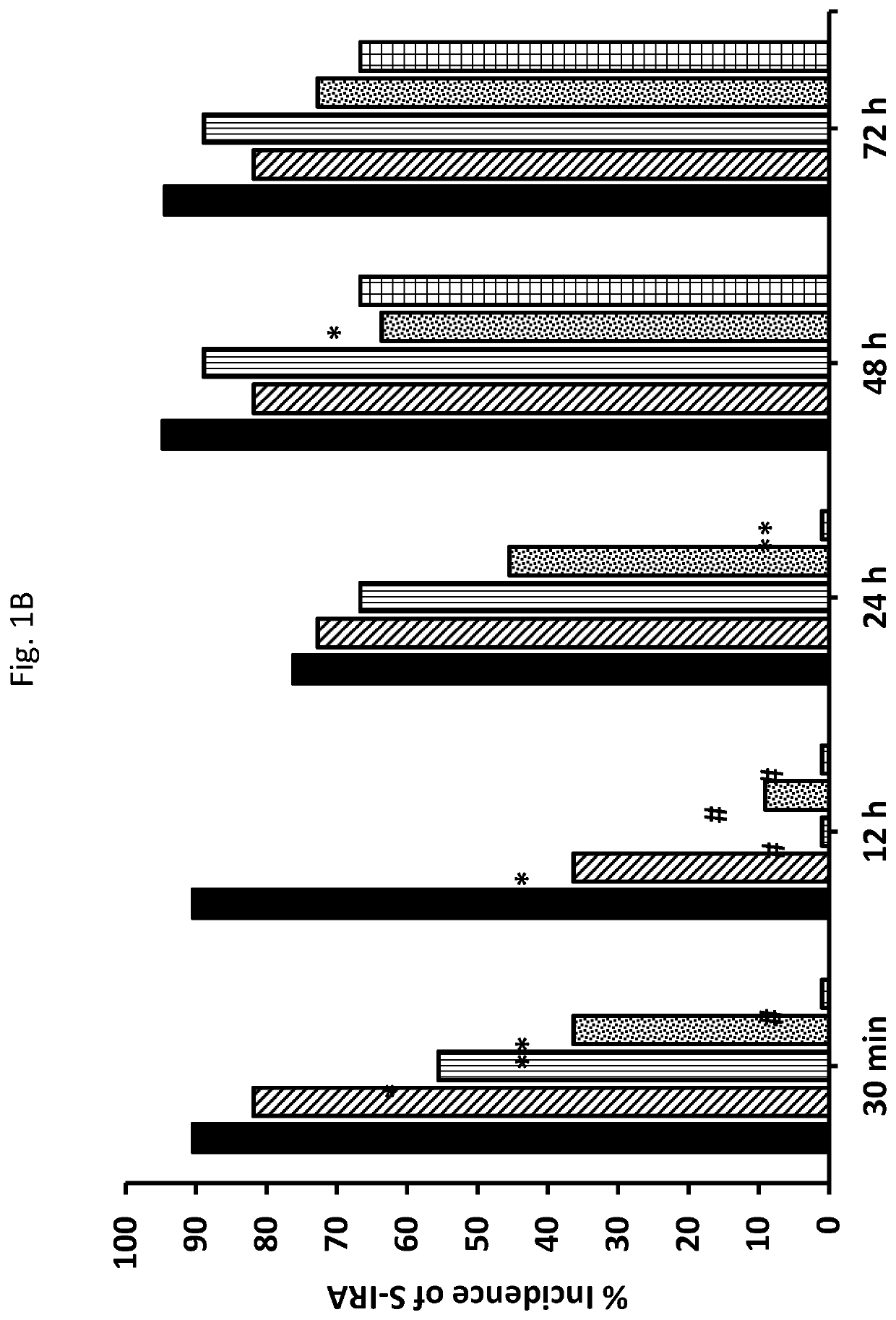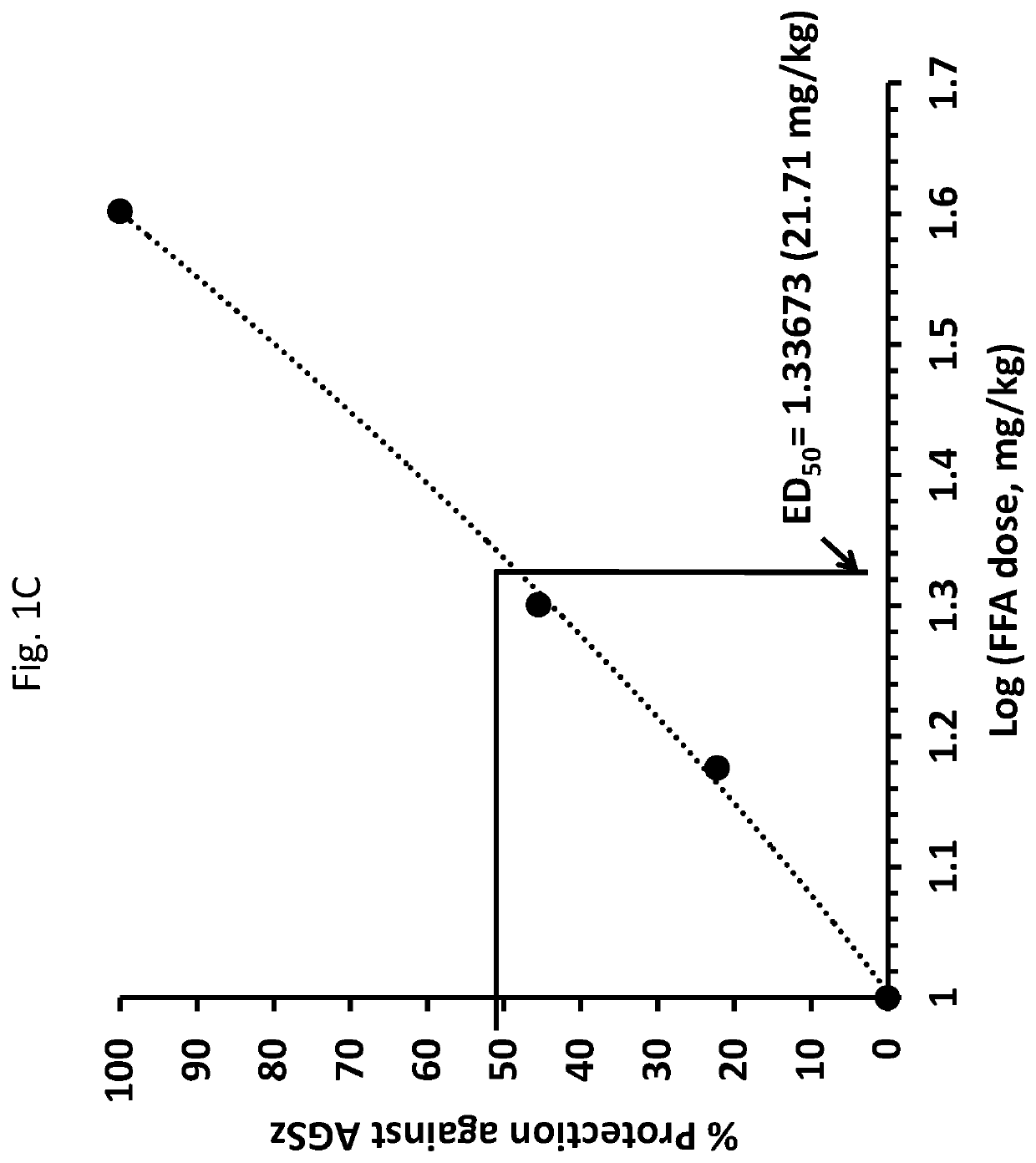Compositions and methods for treating seizure-induced sudden death
a sudden death and composition technology, applied in the field of seizure disorder treatment, can solve the problems of poor development of language and motor skills, ineffectiveness against others, and worsening the frequency and severity of seizures, so as to reduce the likelihood of seizure-induced sudden unexpected death, reduce the mean post-ictal depression period, and inhibit the effect of the patient's pid period
- Summary
- Abstract
- Description
- Claims
- Application Information
AI Technical Summary
Benefits of technology
Problems solved by technology
Method used
Image
Examples
example 1
Effects of Fenfluramine on Animal Model of SUDEP
Materials and Methods
Animals
[0159]These studies involved age matched (Epilepsy Behav. 17:436-40; Faingold, et al. (2011) Brain Res. 1418:104-10; Faingold, et al., (2011) Epilepsy Behav. 22:186-90). Briefly, the mice were maintained on an ad libitum diet under a 12 h light-dark cycle in a temperature and humidity-controlled laboratory animal medicine facility. Starting at postnatal day 23-25, the mice were primed and tested for consistent susceptibility to AGSz and S-IRA by presenting an intense acoustic stimulus, as described previously. The mice exhibiting consistent susceptibility to S-IRA on three consecutive tests were included in the following studies.
Seizure Induction and Resuscitation
[0160]AGSz were induced by presenting to each DBA / 1 mouse (N=287) an intense (110 dB SPL; re: 0.0002 dynes / cm2) broad-band acoustic stimulus from an electrical bell (Heath Zenith Model #172C-A) installed inside a plastic cylinder (43 cm diameter). u...
example 2
Using Serotonin (5-HT) Antagonists to Characterize Activity of Fenfluramine in Mouse Model of SUDEP and Dravet Syndrome
[0184]Recently, the contributions of several serotonin receptor subtype(s) in mediating the action of fenfluramine in blocking seizure-induced sudden death were evaluated in the DBA / 1 mouse model of SUDEP. In these studies, fenfluramine, known to enhance the release of serotonin (5-hydroxytryptamine, 5-HT) in the brain, was found to be effective in blocking audiogenic seizures (AGSz) and seizure-induced respiratory arrest (S-IRA) in DBA / 1 mice (data not shown). However, before the present disclosure, it was unknown whether fenfluramine's effect was mediated by specific 5-HT receptors. Thus, as is presently disclosed, several 5-HT receptor-specific antagonists were used to investigate fenfluramine's effect, to determine whether the antagonists could reverse the anticonvulsant activity (or any other effect) mediated by fenfluramine, and identify a subset of 5-HT recep...
example 3
Determining the Neurotransmitter(s) that Mediate the Anticonvulsant Effect and S-IRA Blocking Effect of Fenfluramine in Dba / 1 Mice
[0192]Because FFA significantly and selectively elevates ambient and phasic (i.e., during postictal depression) levels of 5-HT, norepinephrine and prolactin, and because FFA is effective against AGSz and SUDEP in DBA / 1 mice (as demonstrated above), studying the changes in the levels of these neurotransmitters in the central nervous system will be useful in establishing the mechanism of action of FFA. The levels of monoamines (5-HT, dopamine and norepinephrine), adenosine and prolactin vis-a-vis the levels of FFA and nor-fenfluramine will be analyzed using liquid chromatography coupled with mass spectroscopy (LC-MS) in DBA / 1 mouse plasma and brains at time-points and doses of FFA found to be effective in blocking AGSz and S-IRA in DBA / 1 mice.
PUM
| Property | Measurement | Unit |
|---|---|---|
| Mass | aaaaa | aaaaa |
| Frequency | aaaaa | aaaaa |
| Frequency | aaaaa | aaaaa |
Abstract
Description
Claims
Application Information
 Login to View More
Login to View More - R&D
- Intellectual Property
- Life Sciences
- Materials
- Tech Scout
- Unparalleled Data Quality
- Higher Quality Content
- 60% Fewer Hallucinations
Browse by: Latest US Patents, China's latest patents, Technical Efficacy Thesaurus, Application Domain, Technology Topic, Popular Technical Reports.
© 2025 PatSnap. All rights reserved.Legal|Privacy policy|Modern Slavery Act Transparency Statement|Sitemap|About US| Contact US: help@patsnap.com



